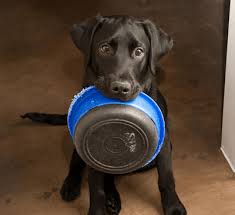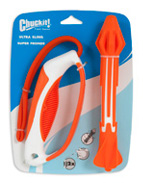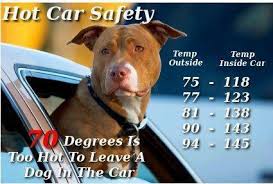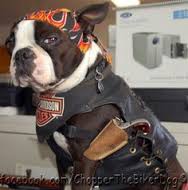Mayim Bialik (Big Bang Theory) Guests
 After starring as "Blossom" in the hit TV series, Mayim Bialik went on to get a PhD in Neuroscience. But the stage called her back. Now she's on The Big Bang Theory and working overtime for the animals. She'll tell us about CatConLA, like ComicCon, but for Cats.
After starring as "Blossom" in the hit TV series, Mayim Bialik went on to get a PhD in Neuroscience. But the stage called her back. Now she's on The Big Bang Theory and working overtime for the animals. She'll tell us about CatConLA, like ComicCon, but for Cats.
Mayim's degree is in neuroscience and she received her PhD from UCLA. She had planned on being a research professor and even taught after receiving her degree. But, it seems acting is her passion along with her two cats.
Mayim recently worked with PetSmart Charities to share her advocacy for cat adoption at the First-ever CatConLA ("like ComicCon - but for cat people").
The convention featured cat celebrities, experts, ideas and pop culture. There were plenty of people, about 6,000, looking for cat products at the 100 exhibits showcasing cat-centric fashion, art, toys, jewelry and furniture.
It seems the attendees got in the spirit of things, with most people either wearing a cat dress, cat scarf or cat tie and everyone seemed to be having fun.
Mayim had her own booth at the convention where she did "Meet and Greets" and talked about the importance of pet adoption.
Mayim also helped to debunk the outdated "Crazy Cat Lady" stereotype. She introduced a panel where two experts talked about cats and cat people.
Currently, she is doing an "#meowOUT" yourself campaign where people can send in or post #meowOUT pictures of themselves breaking the stereotype. We have all heard the stereotype of the spinster lady with all of the cats, but there are people who do amazing things with their cats. Some things she has heard is that there are people who rock climb with their cats and a banker who took his cat to work everyday. You can post your photo on your public Instagram account, using the hashtag #meowOUT, or post your photo on your public Twitter account, using the hashtag #meowOUT.
Mayim will judge the contest and pick "Who is the face of today's cat person?" She thinks this will be a fun thing to do, but more importantly, it will raise awareness about the importance of pet adoption and also that cats are wonderful pets. They are obedient and loving and she hopes more cats get adopted.
Mayim admits, like most of us, that she lets her own two cats sleep in her bed with her. They actually sleep under the covers with their heads on a pillow. They have full run of her house and there is no place they are restricted from going. She also states she is just a guest in their house!
http://www.petsmartcharities.org/campaigns/meow-out-yourself
Animals Words & Phrases - Where Did They Come From?
Boze Hadleigh, Holy Cow
 Boze Hadleigh put together the ultimate book describing the origins of animal phrases. Did you ever wonder where the saying "There's more than one way to skin a cat" comes from? Boze will enlighten and make you laugh at our language.
Boze Hadleigh put together the ultimate book describing the origins of animal phrases. Did you ever wonder where the saying "There's more than one way to skin a cat" comes from? Boze will enlighten and make you laugh at our language.
We love animals but insult humans by calling them everything from weasels or pigs to sheep, mice, chickens, sharks, snakes and birdbrains. Animal epithets, words, and phrases are so widespread; we use hundreds of them everyday. We have become so used to them that we often take them for granted or remain ignorant of the fascinating stories and facts behind them. Many of these expressions have evolved. They started out with one meaning, but now they mean another.
It took Boze Hadleigh over 18 months to compile and double-check all of the information in his new book, "Holy Cow." He states he loved every minute of it, and not only did he define the words and stories of where these expressions came from, but he has also included information on things like why cats usually eat sitting down and dogs eat standing up. This goes back to the fact that the ancestors of dogs would hunt in packs, so in order to get your piece of the catch, it is better to be standing up. But for cats, they are solitary hunters (except for lions) so they can afford to just sit down and eat alone.
Spanning the entire animal kingdom, Holy Cow! explains:
Why Hot Dogs Are Named After Canines
They were named hot dogs basically because of their shape. They were brought to the United States from Frankfurt (as in Frankfurter), Germany. Also in Germany, anyone from Vienna is a Vienner (wiener). Dachshunds were then nicknamed sausage dogs.
There's More Than One Way To Skin A Cat
This originally started out as "There's more than one way to skin a Catfish," because they have very tough skin. Then someone left off the word fish, and Boze states, "It's been bugging us cat lovers ever since!"
Why The Birds And The Bees
This is a very sanitary way of semi-explaining sex to children. Especially at springtime, when both are easily seen - bees buzzing and pollinating and birds laying eggs and raising their young. Previously the two were never mentioned together. Then someone said it together and it stuck.
Buck Naked
Buck-naked is said to derive from the related words buck and buff; the color of buckskin and supposedly the pale tan color of European skin.
Freeze The Balls Off A Brass Monkey
This saying is totally "G" Rated. And is rarely used today. The saying came from using canon balls on ships and the fact that some metals shrink more in cold weather. They would then fall off the "Brass Monkey," which was a tray holding the balls.
Why A Piggy Bank And Why One Feeds The Kitty
In Britain, they used to make little porcelain bed warmers that they called "piggies." They also had kitchenware made from porcelain, including little containers, for spare coins. Eventually, for humor's sake, pig banks were molded in the shape of pigs. Children were then taught how to be thrifty and were given coins to put in the piggy bank. This also has to do with the expression "Nest Egg." They used to put actual porcelain eggs in the nest of a chicken to encourage her to lay more eggs. So nest egg became a term of "Something to add to, eventually a sum of money."
This is definitely one of those books you won't be able to put down. So don't be a "lame duck" and get this book!
Boze Hadleigh is the author of Celebrity Feuds! and Hollywood and Whine and has written more than 15 books. He holds a master's degree in journalism, speaks five languages and has been a winner on Jeopardy! Boze also writes extensively for magazines and his work has appeared in more than 100 publications including TV Guide, Playboy and Us. The author splits his time, when not traveling the world, between Beverly Hills and Sydney, Australia.
http://www.skyhorsepublishing.com
"Change Your Vet If..."
Dr. Marty Becker
 Just like any business, there are always people that give it a bad name. Same with Veterinarians. Animal Radio Veterinary Correspondent Dr. Marty Becker has a list of red flags you should look out for. If you see one, you may need to re-think your vet!
Just like any business, there are always people that give it a bad name. Same with Veterinarians. Animal Radio Veterinary Correspondent Dr. Marty Becker has a list of red flags you should look out for. If you see one, you may need to re-think your vet!
Dr. Becker will never state that your veterinarian can't be wrong and will never miss a diagnosis, because it's just not true. Unfortunately, most people think their veterinarian graduated at or near the top of their class, which may or may not be true. If you feel something is wrong and are not comfortable with your vet, you might want to find another one.
There are so many things that go on behind the scenes that you are not aware of. Just for a normal spaying, two different offices will handle things differently. You will never know how long the surgery was, how much bleeding took place or what kind of materials they used.
However, there are some things you can look at, sort of a list of red flags, that strongly suggest you should look for another vet including:
No Pain Control
When Dr. Becker first went to veterinary school, about 35 years ago, they were taught that animals didn't feel pain, and if they did, it was good because they would be less active during recovery. We now know that that is absurd. Pets have the same neuropathways as humans.
So if you're taking your pet in for a spay, neuter or teeth cleaning, your pet should have pain medication before, during and after surgery. If your veterinarian does not offer this, look for another veterinarian!
Only Doing Ultrasonic Cleanings For Dental Care (No polish - No Sealant)
Your veterinarian needs to take dental radiographs. These are different than radiographs that are done with a normal machine. You also want to make sure that they polish the teeth after a dental and then apply a sealant. You won't know these things, so you need to ask if they have a digital dental x-ray and also ask if they polish and use a sealant on the teeth. The problem with using ultrasonic cleanings is like using a machine on a cobblestone road that has many pits. A good veterinarian will polish the teeth so they are nice and smooth, like a newly paved road. The sealant then helps the plaque from attaching to the tooth.
Only Gloving Up For Major Surgeries (No Cap, Gown, Mask)
You want to make sure that if they are doing surgeries, that they wear a cap, gown, gloves and a mask. Some inferior veterinarians will just use gloves without using a cap, gown or mask. It is cheaper not to use these items, but they are putting your pet's health at risk.
 Rarely Or Never Do Diagnostic Tests (You Need Diagnosis Before Treatment)
Rarely Or Never Do Diagnostic Tests (You Need Diagnosis Before Treatment)
They may think they know what is going on by just looking at the pet without doing any additional tests. Some veterinarians also do not refer your pet to a specialist because they want to keep the income to themselves. Some also don't want to be found wrong by the specialist if they make a misdiagnosis.
Dr. Becker has a saying as a veterinarian, "You can be accused of missing a diagnosis. You can be accused of charging too much. You can be accused of being late for an appointment. But, you can never be accused of not looking at the best interest of the pet." If that means it needs a test, do it. If it means you need to refer to someone who has an expertise that you don't have, you refer it. If it needs a second opinion, you refer it.
Before selecting a vet, ask to take a tour of the hospital. Even if you are an existing client, you can still ask to see where the surgeries are done and where the animals are kept. Remember, you are the client and if you don't like what's going on, you can go elsewhere.
Dr. Becker has been practicing veterinary medicine for more than 30 years and is a best-selling author, syndicated columnist and a frequent guest on national shows. You can also find Dr. Becker on Vetstreet.com, a new animal health and lifestyle website dedicated to giving pet owners the most accurate information possible to keep their pets healthy and happy. Follow Dr. Becker on Facebook and Twitter.
http://www.drmartybecker.com
Finding Lost Pets
Dr. Karen Halligan, The Lucy Pet Foundation
 Today Dr. Halligan will talk about the devastating experience of losing your pet and what to do if it happens. All pets will have plenty of opportunities to slip through your legs and out the door during their lifetime.
Today Dr. Halligan will talk about the devastating experience of losing your pet and what to do if it happens. All pets will have plenty of opportunities to slip through your legs and out the door during their lifetime.
Even if your pet has never been lost, you should always have good, current photos of all your pets. Since animals can sometimes look similar, close-up shots can show definition and detail.
Fortunately, there are some things you can do to help ensure a safe return if your pet does become lost.
- Start your search immediately. Don't wait for your pet to find its way home and don't assume that because your pet may have returned home safely in the past that it will be so lucky this time. Acting quickly can help ensure the likelihood of getting your pet back safe and sound.
- Search your property thoroughly. Sometimes cats and dogs can hide in very small places. Begin by looking in your pet's favorite areas, then look outside, under the porch, behind the shrubs, in the shed, in the trees and on the roof.
 - Start walking around the neighborhood and talk to everybody. Check backyards, garages, alleys, parks, and schoolyards.
- Start walking around the neighborhood and talk to everybody. Check backyards, garages, alleys, parks, and schoolyards.
- Go around the area calling out to your pet. Shake a box of biscuits or treats and/or use your pet's favorite squeaky toy to make some noise.
- Create flyers with a clear photo and detailed description of your pet. List several phone numbers where you can be reached.
- Pass out flyers and post them at post offices, gas stations, libraries, pet supply stores, veterinary clinics, grocery stores, laundromats, convenience stores, shopping complexes, near schools, and on school and church bulletin boards.
- Place an ad in your local newspaper. Advertise in the Sunday paper as well as during the week. Keep the ad running every day for two weeks or until your pet is found.
- Check the newspaper "found" ads every day.
- Some radio stations and local schools will announce lost pet reports, so call them and find out.
- Place some of your clothes outside your home to attract your pet. The smellier, the better. Sweaty gym clothes work great.
- Call animal control, humane societies, the police, local radio stations and veterinary clinics, including emergency hospitals, in your area.
- Come to pet shelters to look at least every two days. Shelters will do their best to match up the description you give of your pet. However, it can be difficult to match an owner with their pet over the phone.
 - Ask postal workers, bus drivers, children, neighbors, UPS drivers and anyone who is regularly in your neighborhood if they have seen your pet. Be sure to show them pictures.
- Ask postal workers, bus drivers, children, neighbors, UPS drivers and anyone who is regularly in your neighborhood if they have seen your pet. Be sure to show them pictures.
- Don't forget the power of social media. You can usually place information and pictures of your lost pet on Facebook or on your local Neighborhood Watch site.
- Don't give up! Pets can return home months after being lost.
Remember, the single most important safeguard is making sure your pet is wearing a current identification tag with your correct phone number on it. This simple item could save your pet's life.
For many pet owners, the choice of what collar or leash to buy for their dog is more of an afterthought and a question of fashion rather than safety. Most people don't think much about collars or leashes until a problem arises. Overlooking the basics of outfitting your pet properly can prove to be fatal. Spend some time right now and make sure all your pets have current identification and are wearing appropriate collars. Having a pet without identification makes it very vulnerable, like a small child running around the neighborhood or at home alone.
Each year, 10 to 12 million animals are euthanized at shelters across the country, and many are family pets. Don't let your dog or cat become a tragic statistic - plan and prepare now.
The Mission of The Lucy Pet Foundation is to reduce pet overpopulation by having mobile spay/neuter clinics across the country and to support causes that benefit animal welfare. With one mobile clinic, the group can spay and neuter 120 pets per week; it plans to eventually have 30 of them.
Here is a list of upcoming free or reduced fee mobile spay and neuter clinics in California:
June 22 & 23
Location: Morgan Park, City of Baldwin Hills, 4100 Baldwin Park Blvd., Baldwin Park, CA
If you live in the City of Downey or Baldwin Park and are low income (below $30,000) spays and neuters are FREE.
June 24
Inland Valley Humane Society
Remember, you must get on a list to have your pet seen at these locations. Please call The Lucy Pet Foundation toll free at 1-855-499-5829 to get your pet scheduled, or register at the events.
http://www.lucypetfoundation.org
 When Pet Food Is Medicine - Dr. Debbie
When Pet Food Is Medicine - Dr. Debbie
Proper pet nutrition is more than just diet choices for the healthy pet. It's even more important to properly feed the sick pet or those with chronic diseases. What you put in your pet's food bowl can help, or harm, his ability to cope with illness.
Peek into your average veterinary office and you'll likely find one or more brands of therapeutic diet foods created to manage pet specific pet health conditions. Veterinarians prescribe therapeutic diets to help pets with kidney disease, diabetes, pancreatitis, weight loss or heart disease. Special digestive diets may focus on hypoallergenic ingredients, fiber content or fat levels. Some diets prevent or dissolve mineralized stones in the urinary bladder. There are even diets to keep the spring in your arthritic dog's step and diets to aid in treating pets with cancer.
The grandfather of veterinary nutrition was Dr. Morris who in 1940 designed a diet to improve longevity of his dog, Buddy, who was a seeing-eye dog battling kidney disease. His efforts led to the introduction to Hill's K/D diet, a favorite diet used today for dogs and cats with kidney dysfunction. Today many more diets and conditions are addressed by companies such as Science Diet, Royal Canin, Purina and Iams.
As a veterinarian I recognize the value that therapeutic diets lend to managing my patients' health.  But be prepared to dig deeper in your wallet for therapeutic diets. The research behind these foods will cost the consumer more than average pet foods. But the investment can pay off in lower medical costs and fewer veterinary visits, justifying the additional cost.
But be prepared to dig deeper in your wallet for therapeutic diets. The research behind these foods will cost the consumer more than average pet foods. But the investment can pay off in lower medical costs and fewer veterinary visits, justifying the additional cost.
Some pet owners turn to home cooked diets in order to avoid the costs of therapeutic diets. Without guidance and veterinary nutrition analysis, pet owners may risk shortchanging their pet's nutrition. One research study identified that over 90-percent of home prepared diets for sick pets failed to be nutritionally adequate. Quality ingredients aren't cheap and a well-produced home cooked diet often ends up costing far more to prepare than commercially produced therapeutic diets.
If your veterinarian recommends nutritional management with a therapeutic diet, discuss all the options with your doctor. Inquire about different brands and sizes of food packages available, as many options are available. Get your money's worth on these diets by following your veterinarian's recommendations. Avoid mixing therapeutic diets with regular foods. This only hinders your pet's results and give you a false sense of saving money by making the food last longer.
Featured veterinarian known as "Dr. Debbie" on national pet radio program, Animal Radio. Ebook author of "Yorkshire Terriers: How to Be Your Dog's Best Friend"; "Pugs: How to Be Your Dog's Best Friend"; "Mini Schnauzers: How to Be Your Dog's Best Friend"; and "Shih Tzu: How to Be Your Dog's Best Friend."
http://www.drdebbie
It's a Wacky Wednesday Here at the Animal Radio® Studios
WackyWed Contest IS ON - LIKE your FAVORITE pic and the three pics with the most LIKES & SHARES are this week's winner will receive the Chuckit! Ultra Sling from Chuckit!.
 WackyWed@AnimalRadio.com - (Please put WACKYWED in the subject line & give us your pet's name, your name & where you hail from) If YOUR pic is chosen then spread the word to your friends & family on Wednesday - the pics w/the most LIKES and SHARES will be the winner!
WackyWed@AnimalRadio.com - (Please put WACKYWED in the subject line & give us your pet's name, your name & where you hail from) If YOUR pic is chosen then spread the word to your friends & family on Wednesday - the pics w/the most LIKES and SHARES will be the winner!
This week we are giving away the Chuckit! Ultra Sling, a highly portable and versatile fetch device that can shoot long or short distances - you can even change it up each time you shoot, from Chuckit!.
Five different fetch toys can be used with the Ultra Sling to keep your dog engaged and entertain. Air, Sea and Land - Chuckit! has it covered!

Join Animal Radio® on Facebook for Wacky Wednesday! Win great prizes every week for your wacky pet pictures. Last month we gave out goodies from Open Farm, Tractive, Remarkabowl, Inset Shield and more. Visit us on Facebook now.
 Animal Radio® News - Lori Brooks
Animal Radio® News - Lori Brooks
Don't Give Your Medical Marijuana To Your Pet
Marijuana may be legal for recreational and medicinal use some states, but that does NOT mean it's safe for your pet. In fact, marijuana can be toxic to pets that ingest too much raw, cooked, or baked marijuana in edibles because animals metabolize marijuana differently than people. Symptoms of marijuana poisoning in pets include listlessness, loss of motor coordination and balance, vomiting, hypothermia, drooling, and in severe cases, seizures, coma and even death. If your pet is showing signs of marijuana poisoning, get it to a veterinarian immediately and be honest with the vet about what you think the cause is, as it will help them to quickly diagnose and treat the animal. Most veterinarians agree that much more discussion is needed and research necessary to determine the true benefits of marijuana and safe and appropriate dosing levels and protocols for treatment on animals. Just like many people use marijuana as a way to manage chronic pain, ease side-effects from cancer treatments and treat a variety of conditions including seizures, some veterinarians and animal lovers give pot to their pets for the same reasons. The American Veterinary Medical Association does not sanction the use of marijuana treatment for pets but has published several articles addressing the possible benefits of its use.
 Some Dog Treats Contain As Many Calories as Donuts
Some Dog Treats Contain As Many Calories as Donuts
Some of the most popular treats given to cats and dogs contain more calories than human junk food and chocolate! Some new research shows that a few pet treats have as many as 415 calories, more than a glazed doughnut. Unlike most food packaging, treats for cats and dogs contain very little nutritional information, but the analysis by Direct Line Pet Insurance revealed a lot of well-known brand names are rich in calories. Bonio dog treats, at 323 calories per 100g, contain around 53 per cent more calories than a McDonald's Big Mac burger. One Bonio dog biscuit has 78 calories, about 7 per cent of an adult Labrador's daily allowance, if it is exercised normally. This is similar to a Kit Kat Chunky, which has 207 calories - 8 per cent of an adult man's recommended daily calorie intake. If you're not sure how much to feed and treat your pet, be sure to ask your vet because factors like age, breed, level of activity and whether the animal has been neutered all play a big role in determining how much to feed them. If your pet is overweight and you still want to reward it for good behavior, there are plenty of healthy alternatives. For example, dogs love carrot sticks, and both dogs and cats love plain cooked chicken; so why not give those a try instead, they're low in calories and high in nutrients.
 New Law Makes it Legal To Break Into Hot Car To Save Dog
New Law Makes it Legal To Break Into Hot Car To Save Dog
Providing greater protection for animals is the premise behind a new legislation introduced in New York that would allow a concerned citizen to remove a pet found to be suffering in an extremely hot car. State Assemblyman John Ceretto says currently in New York if someone tries to break into a vehicle to rescue an animal, that person could be charged with a criminal offense. The legislation would allow a person to take necessary steps to remove an animal from a hot vehicle if a police officer cannot be located. According to the National Humane Society, the temperature inside a car even with the windows slightly opened, can reach 102 degrees within 10 minutes on an 85-degree day.
 Therapy Dog Loses Certification Over Costumes
Therapy Dog Loses Certification Over Costumes
A Pet Partners certified therapy dog has lost that certification because the organization says it found the Boston Terrier's biker costume to be a "safety concern." 5-year-old Chopper has put in several years volunteering in San Diego-area hospitals and senior centers on his mini motorcycle. Chopper's owner says Pet Partners told him it was concerned about "the perception Chopper may be creating in the community with regard to therapy animals." Even though Chopper's been riding around in his black leather vest, biker goggles and bandana for years Pet Partners national director of communications says they are simply enforcing a policy to ensure their certified animals behave appropriately. Whatever the reason, Chopper is not leaving without a fight and his owner is in the process of finding Chopper another organization that will accept him for who he is, a biker dog on a motorcycle who makes his patients happy.
 Baby Elephants Suck Their Trunks Like Human Babies Suck Their Thumbs
Baby Elephants Suck Their Trunks Like Human Babies Suck Their Thumbs
Maybe you saw when the Internet was all-abuzz recently with the image of a baby elephant that appeared to be sucking its trunk. That prompted a lot of people to ask the question and now we know, that yes! Baby elephants do suck their own trunk just like human babies suck their thumbs. And they do it for the same reason - comfort. Just like human newborns, elephant calves are born with a strong sucking reflex. This helps them instinctively know where and how to find their mother's milk. Aside from the comfort it provides, trunk sucking helps an elephant calf learn how to use and control his trunk, which has more than 50,000 individual muscles. And, while trunk sucking is primarily a mannerism found in young elephants, older elephants, even mature bulls, have been seen sucking their trunks when they are nervous or upset.
Pet Safe Cars
Subaru says nearly 70-percent of its customers are pet owners owning at least one dog and it's because of that fact that the company says it will continue to support pet safety and crash testing of pet safety products in a new campaign with the Center for Pet Safety. The automaker and CPS will fund testing of pet crates and small carriers in crash situations as well as examine crate and carrier structural integrity.

NEWS UPDATE brought to you by Drs. Foster & Smith, affordable pet supplies. Low prices every day, so you save on every order.
 Listen to the entire Podcast of this show (#811)
Listen to the entire Podcast of this show (#811)



 After starring as "Blossom" in the hit TV series, Mayim Bialik went on to get a PhD in Neuroscience. But the stage called her back. Now she's on The Big Bang Theory and working overtime for the animals. She'll tell us about
After starring as "Blossom" in the hit TV series, Mayim Bialik went on to get a PhD in Neuroscience. But the stage called her back. Now she's on The Big Bang Theory and working overtime for the animals. She'll tell us about  Boze Hadleigh put together the ultimate book describing the origins of animal phrases. Did you ever wonder where the saying "There's more than one way to skin a cat" comes from? Boze will enlighten and make you laugh at our language.
Boze Hadleigh put together the ultimate book describing the origins of animal phrases. Did you ever wonder where the saying "There's more than one way to skin a cat" comes from? Boze will enlighten and make you laugh at our language. Just like any business, there are always people that give it a bad name. Same with Veterinarians. Animal Radio Veterinary Correspondent Dr. Marty Becker has a list of red flags you should look out for. If you see one, you may need to re-think your vet!
Just like any business, there are always people that give it a bad name. Same with Veterinarians. Animal Radio Veterinary Correspondent Dr. Marty Becker has a list of red flags you should look out for. If you see one, you may need to re-think your vet! Rarely Or Never Do Diagnostic Tests (You Need Diagnosis Before Treatment)
Rarely Or Never Do Diagnostic Tests (You Need Diagnosis Before Treatment)
 Today Dr. Halligan will talk about the devastating experience of losing your pet and what to do if it happens. All pets will have plenty of opportunities to slip through your legs and out the door during their lifetime.
Today Dr. Halligan will talk about the devastating experience of losing your pet and what to do if it happens. All pets will have plenty of opportunities to slip through your legs and out the door during their lifetime.  - Start walking around the neighborhood and talk to everybody. Check backyards, garages, alleys, parks, and schoolyards.
- Start walking around the neighborhood and talk to everybody. Check backyards, garages, alleys, parks, and schoolyards.  - Ask postal workers, bus drivers, children, neighbors, UPS drivers and anyone who is regularly in your neighborhood if they have seen your pet. Be sure to show them pictures.
- Ask postal workers, bus drivers, children, neighbors, UPS drivers and anyone who is regularly in your neighborhood if they have seen your pet. Be sure to show them pictures.  When Pet Food Is Medicine -
When Pet Food Is Medicine - But be prepared to dig deeper in your wallet for therapeutic diets. The research behind these foods will cost the consumer more than average pet foods. But the investment can pay off in lower medical costs and fewer veterinary visits, justifying the additional cost.
But be prepared to dig deeper in your wallet for therapeutic diets. The research behind these foods will cost the consumer more than average pet foods. But the investment can pay off in lower medical costs and fewer veterinary visits, justifying the additional cost.  WackyWed@AnimalRadio.com - (Please put WACKYWED in the subject line & give us your pet's name, your name & where you hail from) If YOUR pic is chosen then spread the word to your friends & family on Wednesday - the pics w/the most LIKES and SHARES will be the winner!
WackyWed@AnimalRadio.com - (Please put WACKYWED in the subject line & give us your pet's name, your name & where you hail from) If YOUR pic is chosen then spread the word to your friends & family on Wednesday - the pics w/the most LIKES and SHARES will be the winner! Animal Radio® News -
Animal Radio® News -  Some Dog Treats Contain As Many Calories as Donuts
Some Dog Treats Contain As Many Calories as Donuts
 New Law Makes it Legal To Break Into Hot Car To Save Dog
New Law Makes it Legal To Break Into Hot Car To Save Dog
 Therapy Dog Loses Certification Over Costumes
Therapy Dog Loses Certification Over Costumes
 Baby Elephants Suck Their Trunks Like Human Babies Suck Their Thumbs
Baby Elephants Suck Their Trunks Like Human Babies Suck Their Thumbs
